Highstead’s ecologically-minded approach in stewarding its landscapes and collections provide conservation and educational value. They demonstrate methods of sustainable ecological design and management for the New England landscape in order to enhance habitat diversity and the conservation of native plants and wildlife. We aim to inspire in our visitors an appreciation for native plants and natural landscapes and instill a desire to adopt ecologically sensitive land stewardship practices in their own home landscapes and natural areas.
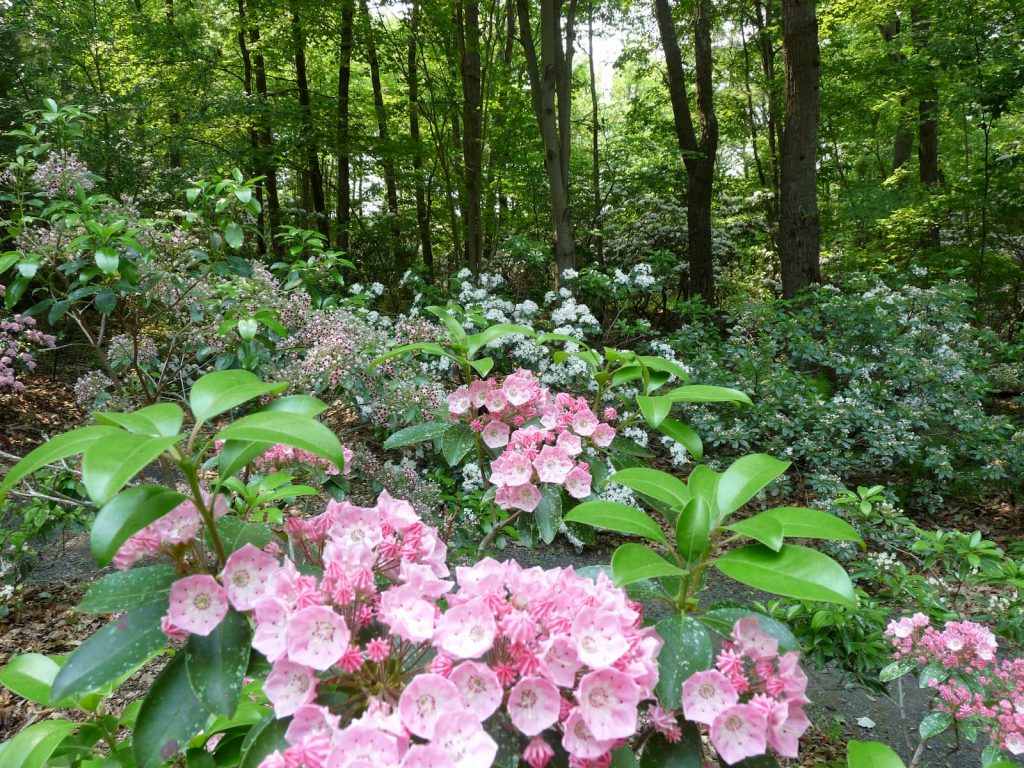
In addition to the living collections, Highstead maintains accurate and up-to-date plant accession records, maps, herbarium specimens, photographs, and library references. Documenting the plants and landscape provide context for understanding and interpreting our natural areas, environment, and land use history. They also offer opportunities for scientific inquiry and enable Highstead to participate in a network of institutions that curate and preserve plants worldwide.
Described below are some of the landscapes and collections maintained on the property.
The Barn landscape & meadow
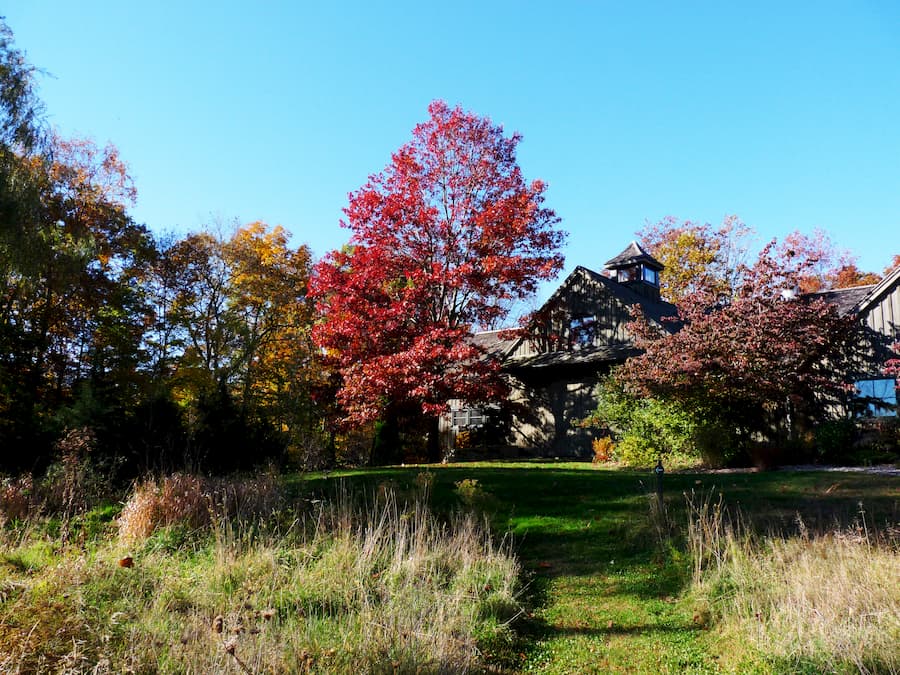
Situated above a wildflower meadow and below an oak forest on the east slope of a bedrock hill, this one-acre landscape is centered on the Barn headquarters building. Native plantings blend the Barn aesthetically into its natural surroundings, create habitat for wildlife, reduce maintenance and pollution, and help maintain a sense of place. Similar to a residence, the Barn landscape demonstrates management of a residential site as a low maintenance, ecologically sound and aesthetically pleasing naturalistic landscape – in the presence of deer populations.
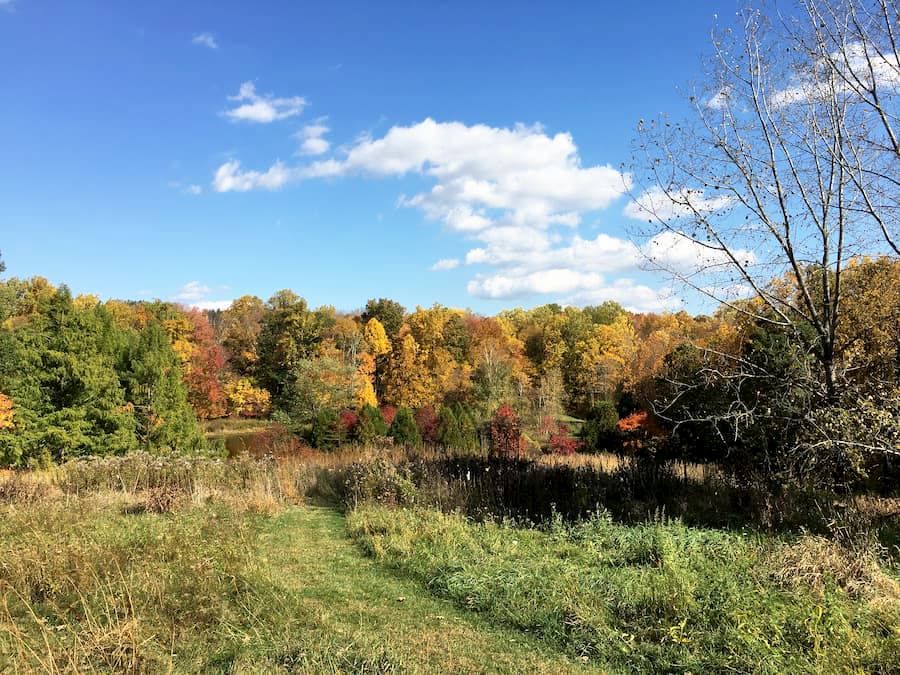
The meadow forms a dominant part of the view from the Barn to the adjacent man-made pond and is an example of a naturalistic meadow and lawn alternative. It began as an open area covered with dredgings from the pond excavation. It was initially planted with a mix of clover and grass seed for erosion control, and subsequently seeded with North American native prairie grasses and forbs for aesthetic enhancement and research. Today it is maintained as habitat for wildlife – which includes songbirds, butterflies and other pollinating insects that depend on native wildflowers and grasses to complete their life cycle. It is mowed annually to prevent transitioning to forest.
The pond landscape
Created in 1986, the pond at Highstead was formed by an earthen dam and catch basin that impounds rainwater and is fed by the headwaters of an intermittent stream flowing from the adjacent wooded swamp. This two and a half-acre pond supports aquatic and wetland vegetation along with wildlife communities associated with inland ponds and marshes.
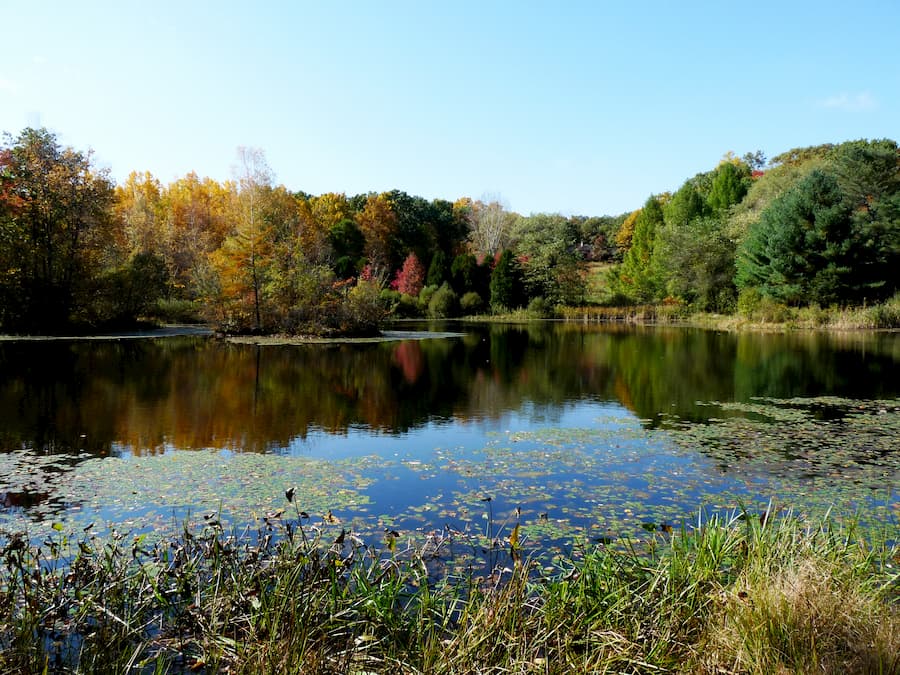
During its construction, the edges of the pond were altered, and restoring this area to a more naturalistic appearance led to various plantings of native trees and shrubs. Collectively these plantings provide a display of flora best suited to moist soils and large open spaces.
The pond is an aesthetic central point for Highstead and contributes to the diversity of plants and habitats on the property. It also serves as an example of good pond stewardship.
The azalea exclosure
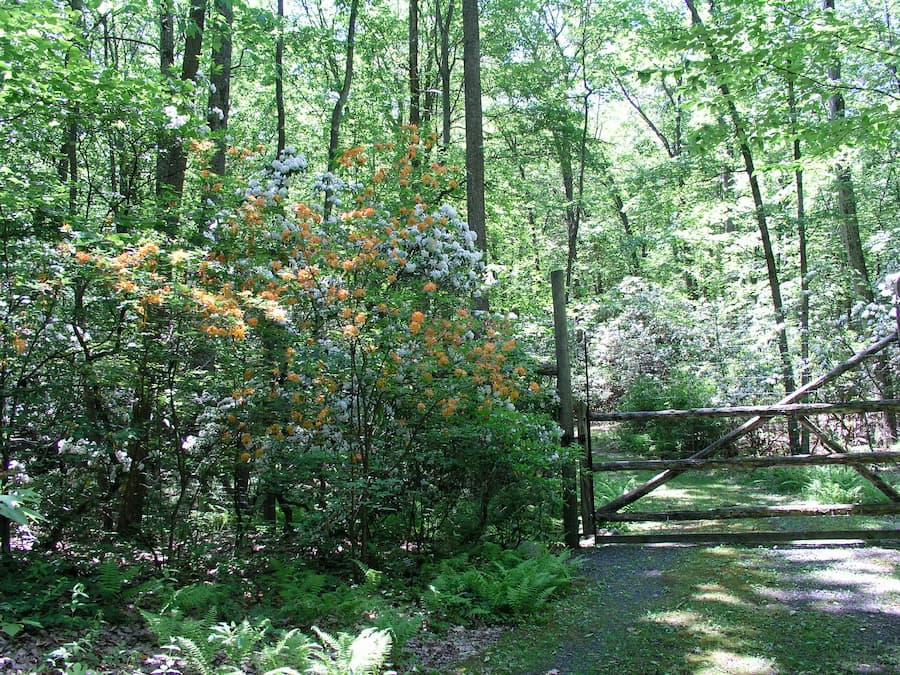
Situated within the oak forest at the northwest corner of the property, this two-acre enhanced woodland area demonstrates a potential landscape in a typical Connecticut backyard while maintaining a naturalistic appearance. Several species of native deciduous azaleas and companion plants were added for aesthetics, plant diversity, and to lengthen the flowering season of the woodland. Fenced since 1993, the site utilizes one of various deer-protection methods and therefore also provides an effective demonstration for managing landscapes in the presence of deer.
The site is allowed to evolve naturally and is an excellent, albeit informal example of a woodland restoration as it is presently undergoing a dramatic increase in herbs and woody plant regeneration due to the elimination of deer.
The Kalmia Collection
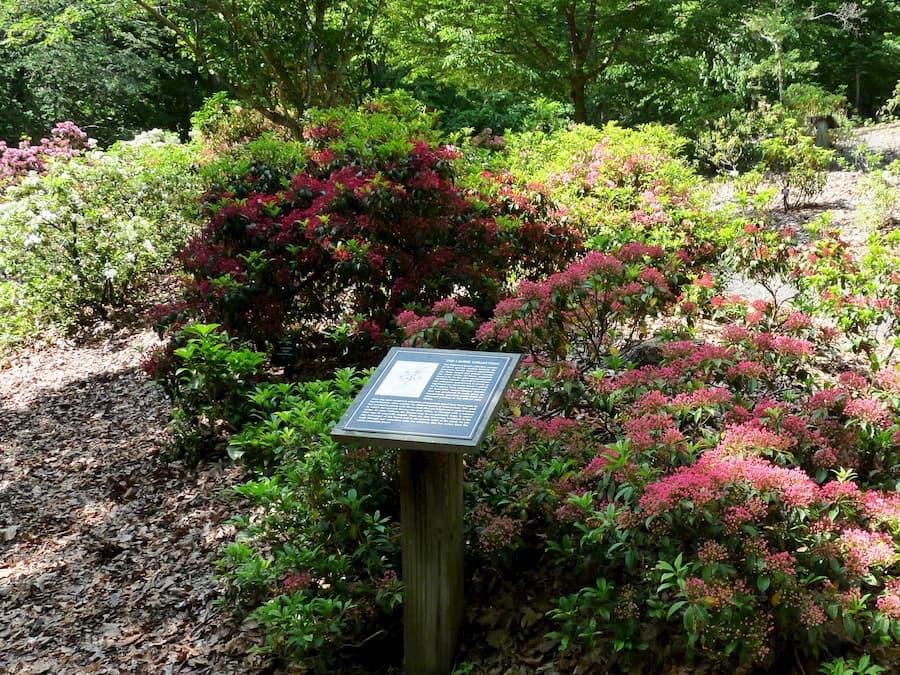
Highstead’s Kalmia (laurel) Collection is a one-acre concentrated display of more than 70 Kalmia forms and cultivars of three species set within a native stand of Kalmia latifolia that spreads across more than 55 acres of oak forest. This setting presents opportunities to view (1) how laurel species adjust and survive naturally within different habitats, (2) the immense range of cultivars that have been produced by horticulturists and can be cultivated in the home landscape, and (3) a restored woodland site with a naturalistic planting style.
In June you will find the laurel in peak bloom. Download the brochure for a self-guided tour of Highstead’s Kalmia collection.
This collection is recognized by the Plant Collections Network.
.
The Native Tree & Shrub Collection

A native plant is one that evolved in a particular region or continent without human introduction. A one hundred mile radius from Highstead is used to determine which plants we classify as native. Any plant, woody or herbaceous, that bears the native tag at Highstead can be found growing naturally within this radius, and was indigenous to this specified area in pre-colonial times.
The Native Tree and Shrub Collection comprises 70 woody plant species that grow in southwestern Connecticut and surrounding areas. It is experienced as a self-guided walk that extends through diverse habitats on the property so that visitors can view these plants in their natural environment, and also get acquainted with the flora and topography of the broader Highstead landscape.
The Collection is viewable year-round, with each season providing different points of interest. The walk is approximately an hour and a half.
Download the brochure for a self-guided tour of Highstead’s native trees and shrubs.
We welcome you to visit Highstead to learn, to connect, and to be inspired.